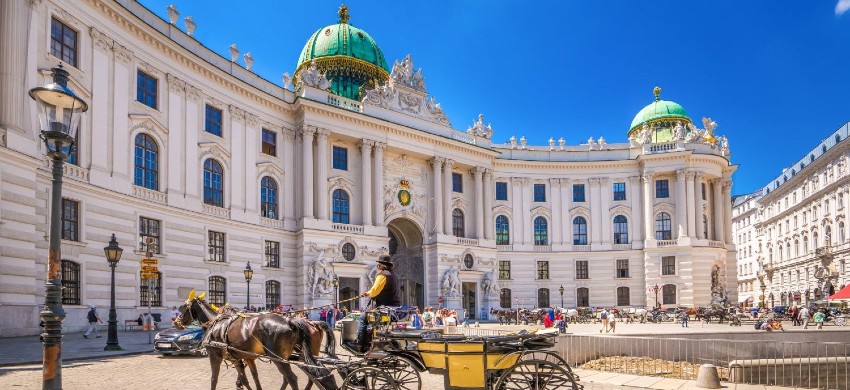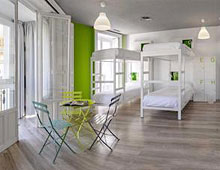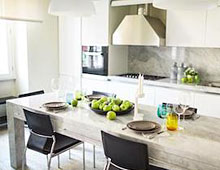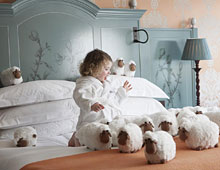Hofburg, the Imperial Palace
Vienna’s top attraction is Hofburg, the Imperial Palace, the winter residence of the Habsburgs who divided their residence and official receptions between this exceptional palace and a no less sumptuous summer residence, Schönbrunn Palace.
For six centuries, until the end of World War I, Hofburg was the centre of power of the Habsburgs, one of the most powerful and long-lived dynasties in Europe.
Perhaps in order to emphasise their grandeur or perhaps just out of vanity, the Habsburgs spared no expense on the opulence of the palace, inside which priceless riches are preserved. Its rooms are a riot of brocades, crystal chandeliers, paintings, sculptures, gilded stucco, silverware and other marvels that only an emperor could afford.
Despite its name, you should not think that the Hofburg is a single palace: it is one of the largest residential complexes in the world, comprising buildings, squares, courtyards and gardens.
The complex currently houses the office of the Federal President of Austria, numerous government offices, ministries, museums, the Spanish Riding School, a conference centre and the historic Heroes’ Square (Heldenplatz).
Among the palace wings open to the public are the imperial flats of Franz Joseph and Sissi, the most famous guests of this luxurious palace. You can see where they ate, slept, worked, bathed, read, played sports and more.
An unmissable museum is dedicated to the beautiful empress that will give you a better insight into this complex character enveloped in a romantic and libertarian aura. True or false this image? Find out at the Sissi Museum!
Imperial flats
According to court ceremonial, each member of the family could have his own personal flat or suite in one of the palace’s many wings: each emperor had a suite built for his family according to his personal taste, which explains the number of rooms as well as the gigantic size of the Hofburg.
Of these imperial suites, two are today open to the public and can be visited: the Imperial Chancellery and the Amalia Residence, which contains the public and private rooms of Franz Joseph and Sisi, who lived here with their children and court.
A visit to the imperial flats will take you through 24 rooms, almost all in Rococo style, embellished with gilded stucco work, Brussels tapestries from the 17th and 19th centuries, Louis XV and Empire style furniture, glittering Bohemian crystal chandeliers and characteristic tiled stoves.
Sissi’s private rooms
For many visitors, the most interesting part of the tour are Empress Elisabeth’s private rooms. Of all of them, the one that most impresses tourists is her dressing room and personal gymnasium.
Here the empress began her day in the early hours of the morning with the ritual of hairdressing, a time she used to study foreign languages (she would learn seven). You can admire the original exercise equipment used by the empress, such as the Swedish painting, horse and rings, as well as a collection of portraits of people she was particularly fond of.
The room that arouses the most curiosity is certainly the bathroom, which reveals the empress’s most intimate secret, namely where she peed: you can admire a very elegant… Dolphin-shaped toilet.
You can also see the rooms used by Sissi to receive her guests, the Small Salon and the Great Salon, and the Alexandrian flats and the Red Salon for more formal dinners and receptions. The works of art decorating these rooms testify to Sissi’s taste for Greece and the Mediterranean.
Franz’s Rooms
No less interesting is the figure of Emperor Franz Joseph, known to audiences of the Sissi film saga as Franz. You can see his private rooms for rest and work as well as those for official receptions, including:
- Audience Room: here Franz Joseph received those who wished to express a concern, thank the monarch or plead for clemency. The adjacent room was the waiting room for people received by the emperor. It is estimated that during his reign Franz Joseph gave audiences to more than 260,000 individuals. In this room you can admire several portraits of the emperor, including the last one, taken a year before his death.
- Lecture Hall: used for meetings of court ministers.
- Great Hall: used by Franz Joseph to receive family members.
- Emperor’s study: Franz Joseph’s work room, where the emperor could be found from as early as four o’clock in the morning and where the meals he ate alone, such as breakfast, were served. You can admire numerous family portraits, including the emperor’s favourite: the portrait of Sissi with her hair down.
The Sissi Museum
Despite the fact that the imperial flats achieve a splendour that is hard to match, many tourists confess to paying the entrance fee just for the opportunity to visit the Sisi Museum. This is the largest collection dedicated to the figure of Elisabeth, Europe’s most famous, loved and at the same time misunderstood empress.
The credit and blame for Sissi’s fame, but also for ignorance about the true events of her life, lies above all with a highly successful film saga that has sought to render only the most romantic and idealistic aspects of this strong woman with a complex personality. Long before she had the cinematic face of the beautiful Romy Schneider, however, Elisabeth was a myth used by the Austrian monarchy for propaganda purposes.
This must-see museum for all Sissi fans, housed in the first six rooms of the imperial flats, reconstructs her story from her birth in Bavaria to her tragic assassination in Geneva, between reality and myth.
More than 300 of the empress’s personal items are on display, including fans, gloves, parasols, cosmetics and travel necessaries. There are also, of course, the magnificent 19th-century dresses worn by the empress, including a reconstruction of the dress she wore on the eve of her wedding and the one she wore on the day of her coronation as queen of Hungary in 1867.
Two more macabre relics are the empress’s original death certificate and the funeral mask created after her assassination.
Silverware Museum
During a visit to the imperial flats, you can admire a sumptuous dining room decorated with the set of a formal dinner in the era of Franz Joseph. The layout of the room, as well as the dinner menu, varied very rigidly depending on the type of dinner and the guests.
The extremely rich trousseau of plates, cutlery, glasses, tablecloths, napkins and all the linen used for imperial dinners are on display at the original Silverware Museum: opened in 1995, it bears witness to the opulence of the Habsburgs not through paintings or sculptures but through everyday objects.
Naturally, since it was the lunch and dinner of an emperor, these objects could only be precious, made of the finest materials by the most skilled craftsmen.
You can admire more than 7,000 of them in an area of more than 1,300 square metres: they are a tiny part of the Habsburg trousseau, which comprises 150,000 objects.
Admission tickets to the Hofburg
The entrance ticket to the Hofburg gives you access to the imperial flats, the Sisi Museum and the Silver Museum. For the other museums housed within the imperial palace, you must purchase a separate ticket. There are discounts for children, senior citizens and students with an international student card.
You can choose to visit the palace on your own with an audio guide or, for a small extra charge, join a guided tour.
The Sisi Ticket is a cumulative ticket that allows you to visit three attractions related to Empress Elisabeth at a discounted price: in addition to the Hofburg, it includes Schönbrunn Palace and the Imperial Furniture Collection, which houses the permanent exhibition ‘Sissi, Myth of the Cinema – Imperial Furniture for a Cinematic Masterpiece’.
Ticket + guided tour
Alternatively, you can book a guided tour of the Hofburg, which includes admission to the Sisi Museum.
Free admission with Vienna Card
The Hofburg Imperial Palace is one of the attractions included in the Vienna Card, the Austrian capital’s official tourist card, which allows free or discounted admission to the city’s most famous sights, as well as unlimited use of public transport.
How to get to the Vienna Hofburg
Hofburg is located in the very centre of Vienna and can be easily reached by metro, tram and bus.
There are two entrances. The entrance for individual visitors who have to buy a ticket is under the copper dome known as the Michaelerkuppel, which can be reached by going through the Michaelertor, a gate on the northeast side of the palace at Michaelerplatz.
If you have already purchased your ticket, you can use the entrance in the inner courtyard of the palace.
Useful information
Entrance ticket
Address
Where is located Hofburg, the Imperial Palace
How to save on transport and entrance fees
City Card allow you to save on public transport and / or on the entrances to the main tourist attractions.






 Hotel
Hotel  Budget accommodations
Budget accommodations  Apartments
Apartments  Family Hotel
Family Hotel  Luxury Hotel
Luxury Hotel